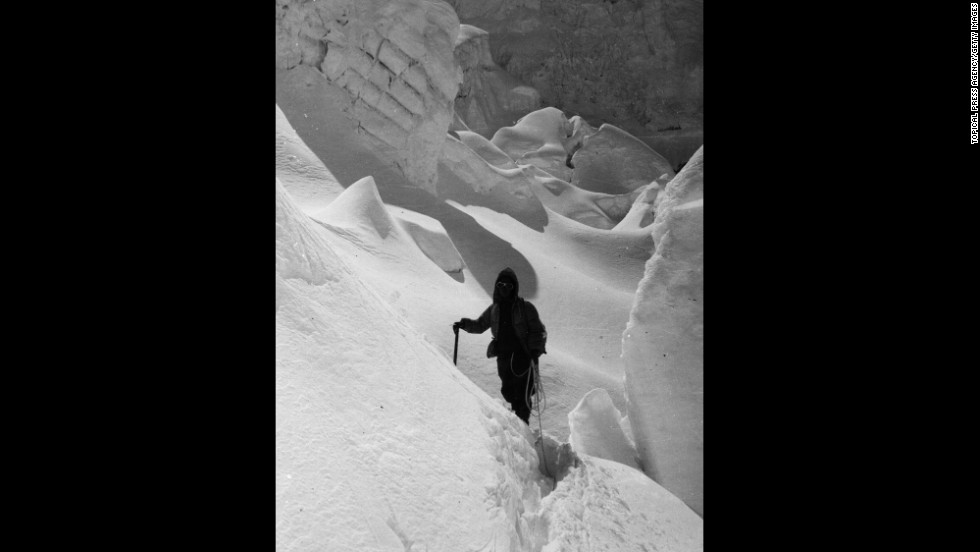Story highlights
- Sherpa: "A big piece of ice suddenly came off the mountain"
- No decision made on whether to go ahead with the climb, says trek organizer
- There are now 13 people confirmed dead and three missing, an official says
- This is the single deadliest accident on Mount Everest; the deadliest year was 1996
Another Sherpa guide has died in Friday's Mount Everest avalanche, bringing the death toll to 13, a Nepalese government official said Saturday.
It is the single deadliest accident on Mount Everest, officials said. Three others are missing, said Madhu Sudan Burlakoti of Nepal's Tourism Ministry, and at least half a dozen are injured.
A group of about 50 people, mostly Nepali Sherpas, were hit by the avalanche at more than 20,000 feet, said Tilak Ram Pandey of the ministry's mountaineering department.
The avalanche took place just above base camp in the Khumbu Ice Fall.
Climbers and guides had been setting the ropes for the route, acclimating and preparing the camps along the route when the avalanche hit Friday, said Gordon Janow with Alpine Ascents International in Seattle.
All 50 to 60 climbers were Nepalese locals and Sherpas who were taking food and supplies to the camps, Pandey said.
The climbers are all now accounted for, Pandey said. "Rescue teams have gone ... to look for the missing."
'I did not think I would survive'
One of those who survived is Wangdi Sherpa, 26, who was working with trekking firm Summit Treks to take 13 Britons to climb Everest.
He recounted how he and others were going to set up Camp II, above base camp, when disaster struck -- and it was only by chance that he was not among the victims.
"A big piece of ice suddenly came off the mountain. I did not think I would survive. I am very happy to have survived," said Wangdi, who has reached the mountain's summit three times before.
He and an assistant, who were attached to a safety rope, hid behind a piece of ice as the avalanche came tumbling down, he said.
"We could do that because we were in the front," he said. "Up to 12 of those behind us survived, but the ones after them died. Those who had already crossed ahead when the ice came off also survived.
"We stayed behind the ice for five minutes. By the time we reached base camp it was around 11 a.m. When the ice fell we saw nothing because of the dust," Wangdi said.
'There is always a risk of death'
This latest accident occurred during the spring climbing season, the busiest of the year.
Climbers arrive in April to acclimate to the altitude before heading toward the summit of the world's highest mountain. Ethnic Sherpas act as guides for the mostly foreign clients.
Now the question is whether the planned expedition will go ahead in the wake of Friday's tragedy.
"The Sherpas and the clients are not in a condition to talk to each other at the moment," said Jeewan Ghimire, of Shangri La Treks.
Four of his Sherpas are dead after the avalanche and one is missing.
"It could take a week more before a decision on whether the climb will go ahead will be taken," he said.
According to Ghimire, "A distance is being maintained between the two sides. The clients will have to accept the decision of the Sherpas."
"Our friends and brothers have died. There will be no question of doing anything without a discussion with everyone involved," said Pasang Sherpa, who also has been to Everest before.
"This is our job, so there is always a risk of death. We cannot say that there has been exploitation."
About 334 foreign climbers have been given permission to climb Everest over the next couple of months, with an estimated 400 Sherpas helping them, mountaineering official Dipendra Poudel said Friday.
From May 15 to 30 is usually the best window for reaching the 29,028-foot peak.
Lakpa Sherpa, who has twice reached the summit of Everest, lost his cousin Ang Kaji Sherpa on the mountain on Friday.
Despite that loss, he said safety standards have improved by 80% on what they were 10 years ago, because the Sherpas are better trained. He added, "There is always a risk in this job."
The deadliest year was in 1996
Before Friday, the deadliest single-day toll was from an accident in May 1996, when eight climbers disappeared when a huge storm hit. Their tragic story was chronicled in Jon Krakauer's bestselling book "Into Thin Air."
The deadliest year on Everest was 1996, when 15 people died. Another 12 climbers were killed in 2006.
Until the late 1970s, only a handful of climbers reached the top each year. The number topped 100 for the first time in 1993. By 2004, it was more than 300. In 2012, the number was more than 500.
























































